Striking, surreal images that feature beautiful buildings and architecture.
Simone Hutsch (A.K.A. heysupersimi) is a passionate graphic designer and self-taught architecture photographer from Berlin, Germany, currently living in London, UK.
Her work combines art and photography, and lets people dive into a different world. Independent, self-motivated projects as well as commissioned work trigger Simone’s curiosity and keep her creative juices flowing. Her striking compositions come together in a unique way, as she sets off with her camera to explore the geometry of local architecture and later gives the buildings a surreal touch with her distinct post-production process.
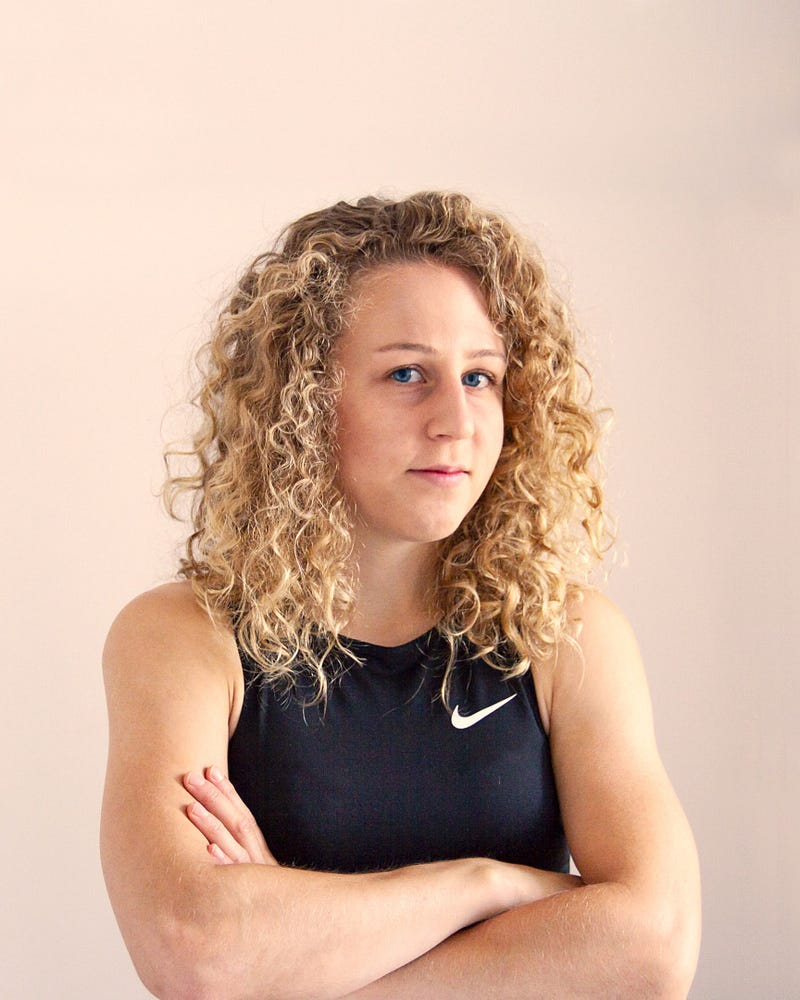
Hi Simone! Tell us a little about yourself — how did you get started in photography and graphic design, and how did you get to where you are today?
After finishing school, I started studying graphic design. Photography was always a part of it, but I only really got into architecture photography after my studies. I first started photography as a personal creative project outside of work, and that’s still the case. I still work as a full-time graphic designer while doing photography on the side. I see this as a journey, and what matters to me is that every day I get a tiny bit better and truly enjoy what I’m doing.
With a wide-ranging skill set between the disciplines of design and photography, what do you like most about each medium? Do you enjoy one more than the other, or how do you balance the two?
I’ve always managed to keep the balance — I love being outside and exploring architecture in whatever area I’m in, but I also love designing a magazine or creating a new brand on my computer. The only imbalance I see is that sometimes I just keep creating. I’ll spend an entire day at work on my computer, then in the evening go out with my camera and keep editing photos until midnight.

What drew you to architecture in particular as a photographic subject?
The pattern and geometric shapes in buildings are really interesting to me and remind me of my graphic design. I’m a curious person that likes exploring. Architecture surrounds me all the time and every building is designed for its own purpose, so I really like to interpret each one in a different way.
How would you describe your aesthetic, and how did you discover and evolve your visual voice over time?
In my retouching process, I lend a surreal flair to every image, and I’ll also manipulate the subject — sometimes even creating a completely new building. My style is very minimal, but at the same time I pay a lot of attention to detail.
My images are aesthetically pleasing, and have a calm and positive vibe. I’ll take an architectural subject and isolate it from the background, reducing the overall composition to a minimum or even focusing on a single detail.
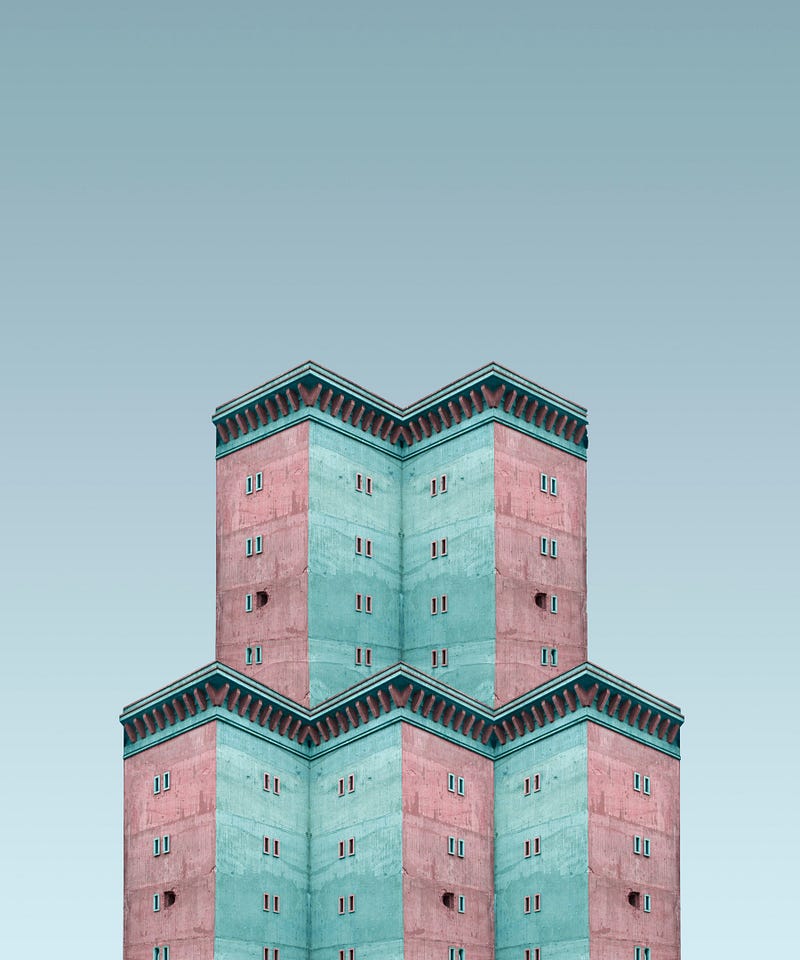
Generally, I think combining photography with graphic design allows for so many more visual possibilities, so I just think — why not?
Describe your creative process — what do you look for in subjects to photograph?
Perspective, colors, shapes, and patterns are the main reasons for me to take a photo. I don’t care how famous a building is, as long as it inspires me. I’ll also think about whether I want to try a certain theme, like a nighttime theme, but I’ll mostly just go around the city to explore until something catches my eye. Then I might try shooting the same building at different times of day, as something like a sunset can completely change the look of a building — there’s one building in London that really looks like it catches fire when the reds and oranges of a sunset hit it.

Sometimes I already have the inspiration — I’ll see a piece of architecture and already have things I’d want to accentuate in it; to try to give it a certain color, etc. But sometimes it’s only later on when I’m reviewing the photos I took that I’ll start to see the possibilities, and when I open them up in Photoshop and start to play more, I realize the different things each photo can become.
Perspective is also a very, very important part of photography. If I change my point of view, for example if I stand on a bridge 300 meters away, I see an entirely different building. But I actually prefer to only shoot a subject once.
How do you add your individual aesthetic to a photo shoot?
It’s really in my retouching process that I add my aesthetic to a photo shoot. I’ll spend anywhere between 15–60 minutes doing post-production on a photo in Photoshop. Cleaning up facades, color corrections and a special treatment for the background sky are all must-haves to create a surreal vibe.
Typically in Photoshop I’ll follow a process: first I’ll take the most prominent part of a building — like its main facade — and isolate it from the background. Then I replace the background with my own custom gradients, often to lend the image a dreamy sunset color but make the composition more bold and surreal than what you’d find in real life. I make my own gradients and never use the same exact one in two different images.
Then I’ll clean up some of the blemishes and imperfections of buildings with the clone stamp tool, and add layer masks so that I can play with adjustments like brightness, curves, and color balance. My favorite tool is selective color, because I can just isolate one — like the cyan color of a blue sky reflected in a building’s windows, and adjust the hues of just that one spot.
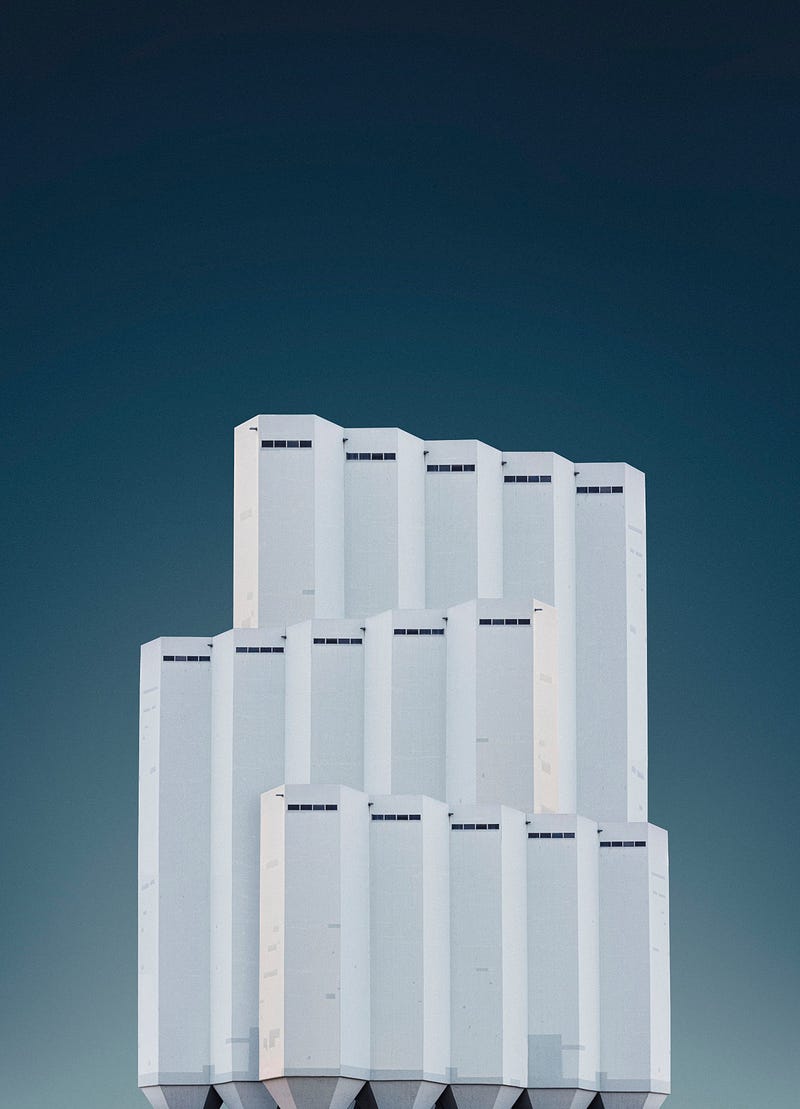
There are times when I’ll actually just create my own buildings — it’s just a process of playing around, because only when you start to play with it can you let your creative mind be free. For example, instead of just cutting out a whole building from the background, I’ll take a facade, reflect it, or perspective-transform it in order to distort the layer and give it the perspective of receding into the distance. I’ll also cut out one story of a building and duplicate it multiple times instead of simply showing all the stories.
When you zoom in really close, my photos will have a grainy quality to them, so sometimes I create an adjustment layer to add noise to my gradient backgrounds and make the overall texture match seamlessly.
Overall, I definitely like to keep it minimal — less it more! I make sure to give each building room to breathe.
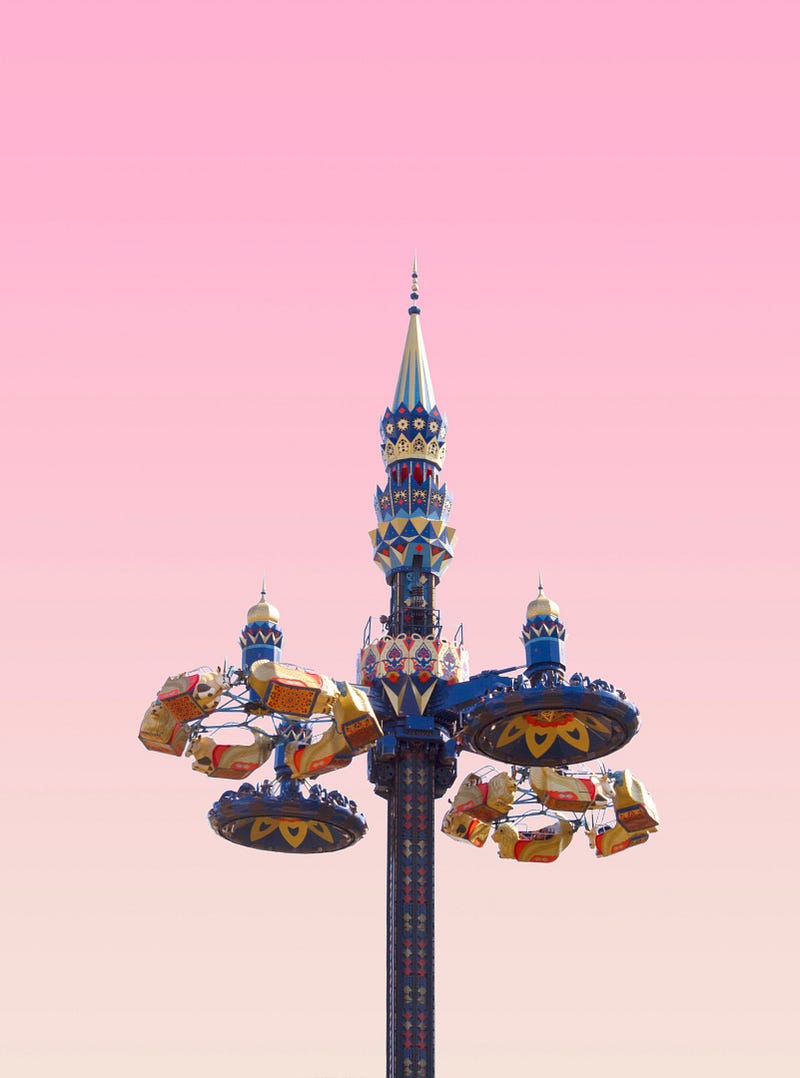
Do you have a favorite camera?
Not in particular, as long as the resolution is high. I believe it’s all about the person behind it. I’d rather say I have a favorite type of lenses: telephoto lenses. They are perfect for my type of photography, as the further you are away from a building, the straighter the geometry. What I use is a Canon 7D and a NIKON P1000 which has good zoom. I’ll try to take the straightest possible shot, as it helps minimize the manipulation work I later do in Photoshop.
What’s one of the most memorable projects you’ve worked on?
Even though it was a few years ago, I think it was my Bachelor Thesis project. I was still quite inexperienced and I’m also a person that thinks a lot about their work. The project itself was huge as well. I established an entire new look and feel of a very old fashioned product: A ring-binder calendar, which is actually super practical, individual, and easy for keeping a good overview. But let’s be honest: Trying to establish something like this in a digital world is really difficult. Who wants an analog calendar when there’s Google?
I thought about the strategy, the product design itself, and designed new calendars, to-do lists, etc. for outdoor and digital communication. I did enjoy it a lot; going into the details is the most fun for me. I also liked working constantly every day. Allowing myself time to step away and free up my mind with other activities helped a lot.
I still work like this with my photography: Pretty much every day an hour in the morning or before going to sleep. I find it really important to give myself time to think about an idea or project and, when I get stuck, I stop and do something else, so when I come back to my desk I instantly know what I need to do.
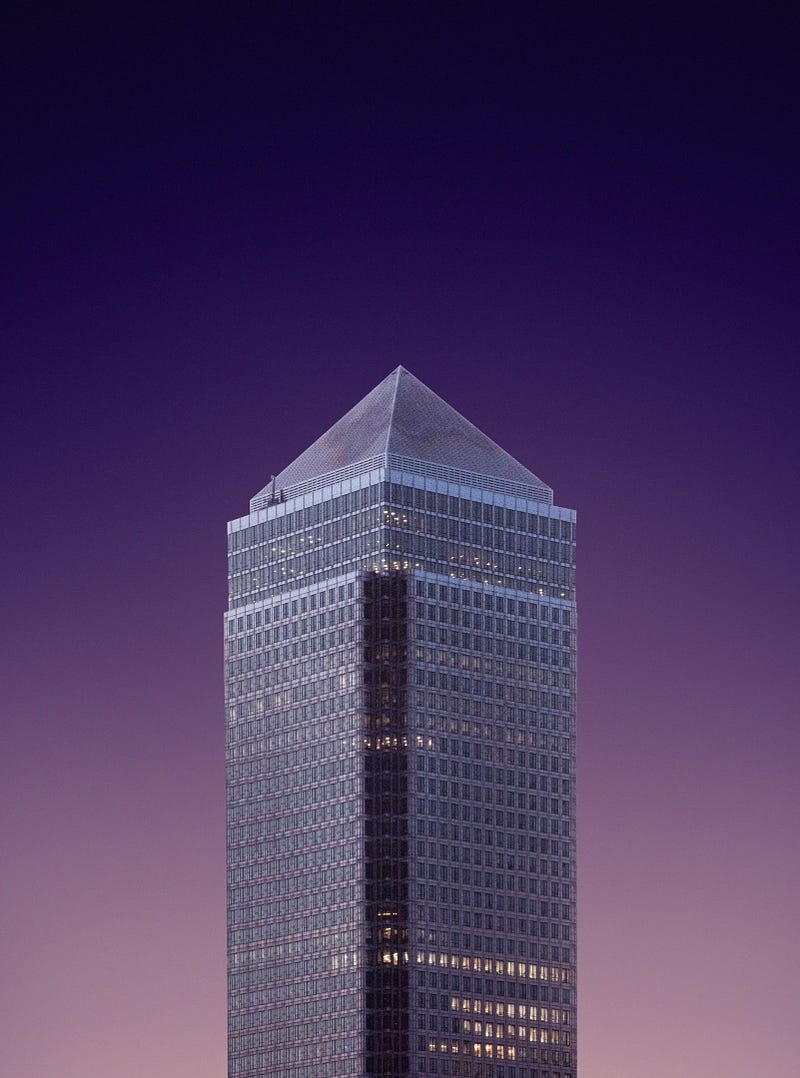
What would be your ideal subject to shoot, or dream design project?
In terms of photography, I’d love to have more collaborations with magazines where I need to travel to different places. Barcelona, New York, or even in small towns — beautiful architecture can be found everywhere.
In terms of design, the most enjoyable projects for me are creating a new brand or designing something that can solve a problem.
What advice would you give to other creatives just starting out?
Experience needs time, so don’t be too hard on yourself. The most important thing is that you enjoy what you do. Being creative is a journey and we all keep learning and improving every day.
Where do you turn for inspiration, and do you have a favorite photographer, designer, or artist?
I often get stuck on scrolling through Behance or Pinterest. There are so many good creatives, but if I had to name one: Benedict Redgrove. His photography is absolutely stunning, definitely someone I look up to.
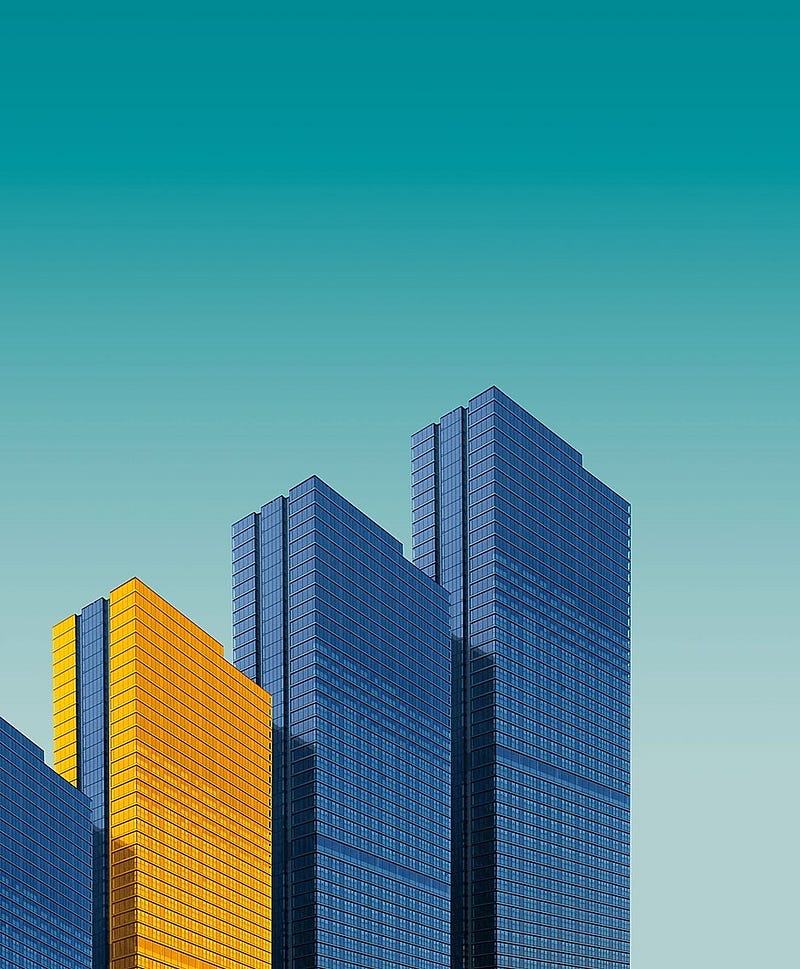
Thank you for sharing, Simone!
To view ore of Simone’s work, explore her images on Noun Project, visit her website, Behance, and Instagram.
Interested in joining our community of photographers and contributing to Noun Project? Submit your photos and explore our guide to creating authentic, inclusive images.
Click here to download FREE photo shoot production document templates.
Plan your photo shoots out for the year with our free monthly photo shoot guide.
For more photography tips, check out our blog.
Sign up for our photo newsletter to make sure you never miss out on our photography content.




